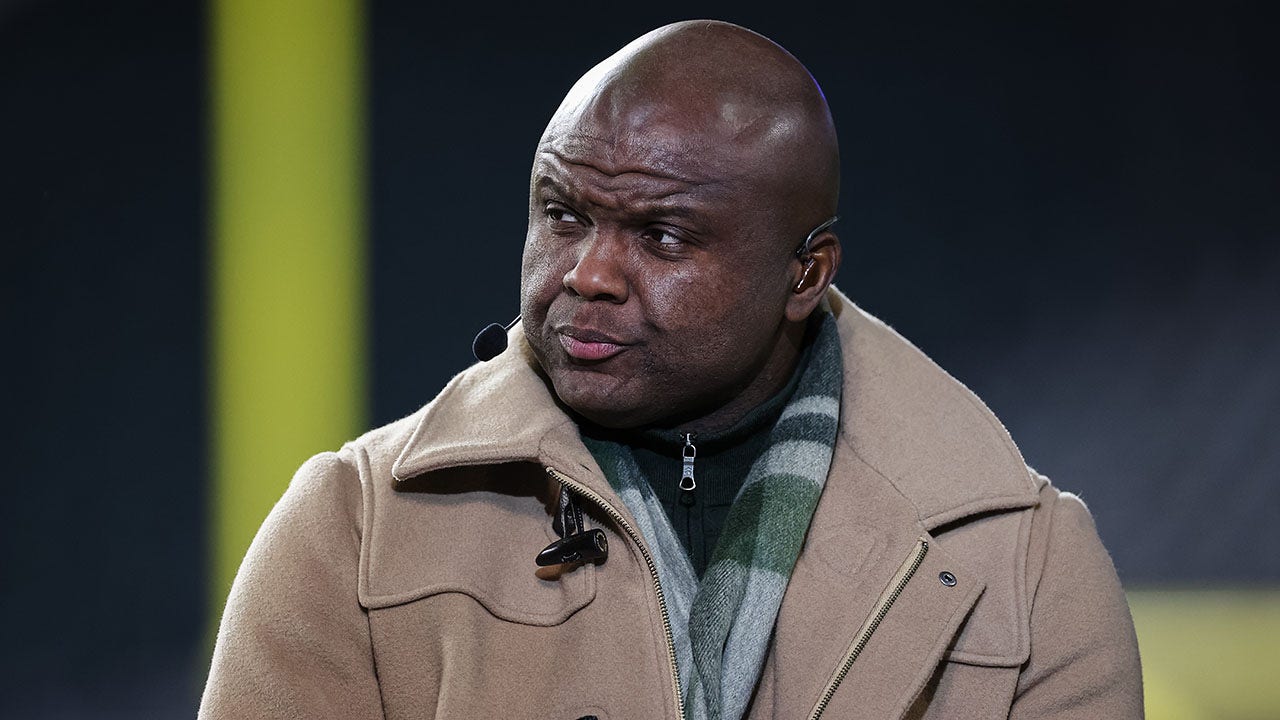The question of trimming — and “significantly reduced” word counts — is taken up several more times in “Sally & Tom,” which made its world premiere at Minneapolis’s Guthrie Theater in 2022 and opened Tuesday off-Broadway at the Public Theater.
There are two storylines in Parks’s play. One takes place in 1790 and centers on the relationship between Thomas Jefferson (a reedy-voiced Gabriel Ebert) and Sally Hemings (Sheria Irving), the enslaved woman who bore him at least six children. Jefferson’s Monticello plantation is halfheartedly suggested by set designer Riccardo Hernández with a free-standing door, military-issue columns and a ponderous curtain. Etched on a black wall spackled with white paint are the words “E PLURIBUS UNUM”: out of many, one. This play-within-a-play is titled “The Pursuit of Happiness” and is performed by a downtown theater troupe called the Good Company, which has “a track record of doing angry political plays that nobody comes to.”
The other storyline begins as the actors — now in sweats rather than starchy 18th-century costumes (designed by Rodrigo Muñoz) — are in the throes of rehearsing “Pursuit.” Mere days away from opening night, the playwright, Luce (Irving), and her director and romantic partner, Mike (Ebert), are still finessing lines and figuring out how to please their producer, who holds the purse strings, without sacrificing their artistic vision.
Make that visions: “The Pursuit of Happiness” doesn’t admit of a single unifying interpretation. It’s the seditious inverse of “e pluribus unum.” Its creators can’t seem to decide: Did Jefferson really love Hemings, or was he a sexual predator? Was he “kinder” than other enslavers of his time? Is there evidence to support the claim, made by a moneybags producer, that he had Asperger’s? At least two actors think “Pursuit” is a “Black play,” but Scout (an excitable Sun Mee Chomet), a Korean company member, has doubts. In a vulnerable moment, she ventilates a question that has been simmering at the back of her mind for weeks: “How much skin do I actually have in this game?” And, referring to colorblind casting, she asks: “Should only the people who were, or are, the people, play the people?”
Sincere as they are, the thoughts are also symptomatic of “Sally & Tom’s’” eagerness to spoon-feed its audience pre-masticated ideas. Scenes in the self-consciously stylized “Pursuit” fall flat for a different reason: The historical personages are less directed than posed. One righteous moan-a-logue by James Hemings (Alano Miller), Jefferson’s enslaved chef and valet and Sally’s brother, takes up a full page of the script and touches on Thomas Paine’s “The Rights of Man,” the philosophers’ stone and “breeding farms” near Monticello — and ends by predicting a “reckoning”: “The stars that articulate what you call your birthright will have all gone out, leaving you in a darkness that is my color and the song in the air will sing my name!”
Speaking for the skeptics in the audience, Luce, during rehearsals, dismisses the declamation as a “manufactured moment.” “TJ would never ever let James go on and on like that,” she remarks to the actor playing James before amputating the oration. If “Pursuit” often comes across as a warmed-over Wiki-play — with actors dutifully telling us that Jefferson owned enslaved people, rewrote the Bible, renovated homes — then “Sally & Tom,” directed by Steve Broadnax III, often seems like a note from the playwright you’d find in the Playbill.
Parks has described herself as a “myth head” who likes to color outside of history’s lines; paradoxically, the most variegated moments in her latest effort are not the historically inspired ones or the ones thinly disguised as essays, but the processual ones evoking the hurly-burly of dress rehearsals. Changing costumes, applying makeup, practicing swings and punches, the actors make us care about their unplanned pregnancy, their run-in with cops, their terror of being off-book, their prospects of getting cast in an indie film.
Yet exposition turns up in the present-day scenes, too. Admiring the program for their play, Maggie (Kristolyn Lloyd) gushes to a fellow actor: “The first one we haven’t had to print ourselves, thanks to Teddy. Low-budget-no-budget theater never looked so good.” Pseudo-profundities like “What are any of us at the end of the day but people who make choices?” and “I stand at the intersection of the horrible, and the splendid and the dizzy-making contradiction that is all of us” are also wafted across the footlights. For lines like these, the question “To cut or not to cut?” is answered resoundingly in the affirmative.
Sally & Tom, through May 12 at the Public Theater, New York. 2 hours and 35 minutes, including intermission. publictheater.org.















































